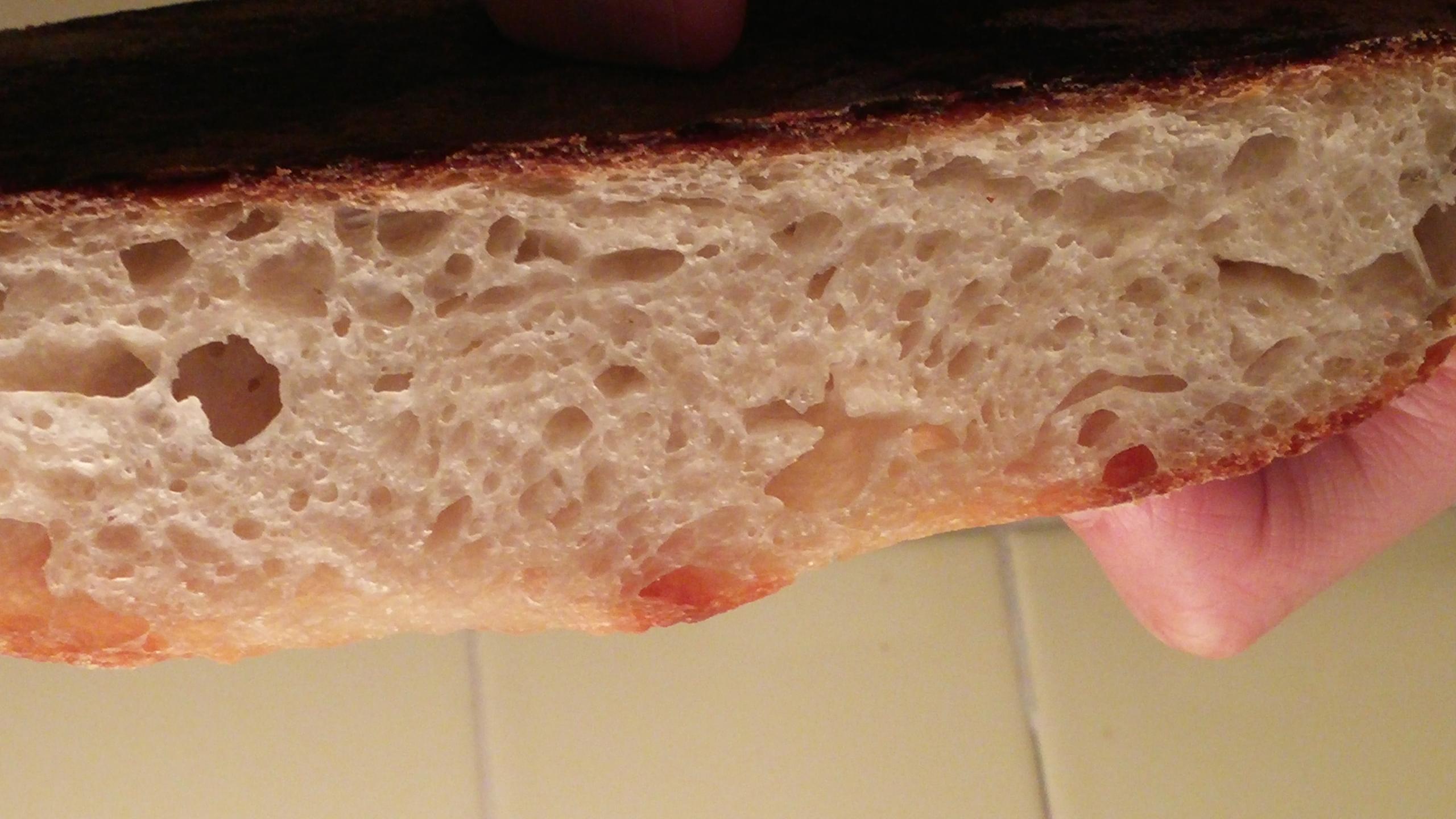
Bouabsa style baguettes (again)
A break in the action. I'd been so busy lately with my batard thing that I neglected the simple pleasures of rolling out a few baguettes. So I took a time-out and decided to go back to the first (and easiest) of my baguettes formulae, the one that kicked off the whole thing for my attempts at achieving a good result - Bouabsa style baguettes.
As I had with my recent successes in batard bakes, I baked these directly out of the refrigerator. The original formula calls for a bulk retard, then bench warm-up, divide, shape and final proof. So I was rebelling against all of these steps as my overnight retard was with the already shaped baguettes, and no post-retard warmup.
From an external point of view, the crust is all that I would want it to be - well shaped and scored, baked dark and nice oven spring. Internally, the crumb is tight! Nothing like what I had experienced way back when the crumb just about exploded open.
So, quickly paring down the possibilities on why, it seems quite obvious that the lack of a final proof must be the culprit. For the method that I've been playing with, refrigerator-proofed, insufficient bench bulk rise - 60 minutes with three letter folds, is a likely reason as to why they didn't achieve a better crumb.
I will give these another go in a few days with a change to something or other - more likely than not I'll go for a more extended bulk rise to see how that experiment comes out. The original 60 minutes was quite skimpy on the rise time, but for now I will remain stubbornly attached to a pre-shaped retard and direct-from-the-refrigerator bake. (It's that Janet's mother thing I'd mentioned a few months back - do something just a bit different to make it your own.)
Steam released and baguettes rotated.
For comparison here is a pic of the open crumb from an early successful Bouabsa bake in Dec, 2013:
Back to the drawing board...
alan

















